






| Xysticus sp. (C. L. Koch, 1835) |







|
|
Scientific name: Xysticus sp. (C. L. Koch, 1835) Common name: French name: Order: Araneae Family: Thomisidae Size: Females: 6 to 10 mm; males: 4 to 7 mm. Biotope: Flowers and low growing vegetation, low branches on trees and shrubs. Web: No web. The spiders of the Xysticus genus are used to hunting by sitting in wait on the low growing vegetation. Observation period: April to September. Geographic area: You can find the species of the Xysticus genus on almost all continents and they are only missing in South America and in the polar regions. |
The spiders of the Xysticus genus are small-sized crab spiders characterized by two well developed fore leg pairs, a cephalothorax slightly smaller than the abdomen and often showing a pale median band. The edges of the cephalothorax show a dark line above a pale line. The abdomen is generally flattened. It is enlarged at the rear and often shows a dark leaf-shaped or pagoda-shaped median pattern. The four median eyes form a trapeze. It is square-shaped or wider than high on the spiders of the Xysticus genus, meaning that the median eyes are not laterally very close. The spiders of the Ozyptila genus, which are a smaller size and generally observed on the ground, are very similar to those of the Xysticus genus. However the median eyes are laterally closer to each other so that the trapeze shape is higher than wide. There are many similar species (about 360 worldwide, 71 in Europe) and it is very difficult to tell them apart without a microscopic exam of the genitalia. The most often mentioned species in France are Xysticus acerbus, Xysticus audax, Xysticus bifasciatus, Xysticus bufo, Xysticus cristatus, Xysticus erraticus, Xysticus ferrugineus, Xysticus gallicus, Xysticus kempeleni, Xysticus kochi, Xysticus lanio, Xysticus luctator, Xysticus luctuosus, Xysticus ninnii, Xysticus robustus, Xysticus sabulosus and Xysticus ulmi. On pictures I have found some information to tell apart Xysticus ulmi, the Xysticus of the cristatus group (Xysticus cristatus, Xysticus kochi and Xysticus bifasciatus) and the Xysticus of the audax group (Xysticus audax, Xysticus kempeleni, Xysticus luctuosus and Xysticus gallicus). |
| [To know more about the Xysticus sp.] [Next picture] [Top] |

|
You can observe many spiders of the Xysticus genus on flowers where they sit in wait for preys. |
| [To know more about the Xysticus sp.] [Next picture] [Previous picture] [Top] |
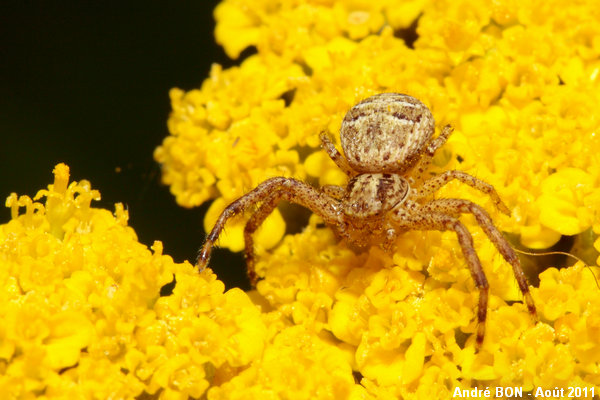
|
Unlike the Flower Crab Spider (Misumena vatia), the spiders of the Xysticus genus do not show any phenomenon of homochromy to hide on yellow or white flowers. |
| [To know more about the Xysticus sp.] [Next picture] [Previous picture] [Top] |
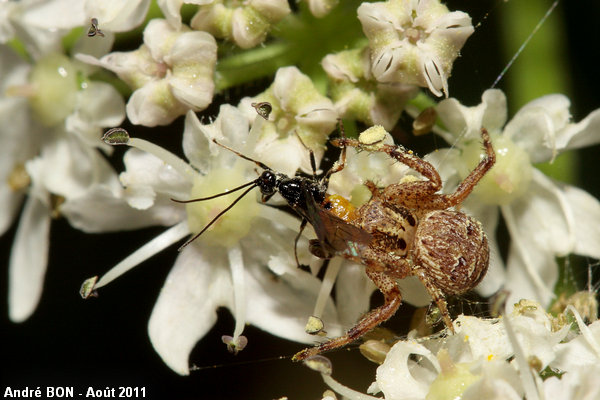
|
I have listed this spider as Xysticus sp. because of its size, close to 10 mm, and because of its position on the low growing vegetation. |
| [To know more about the Xysticus sp.] [Next picture] [Previous picture] [Top] |
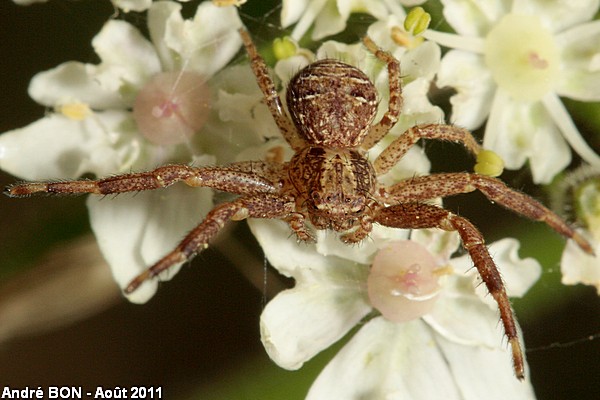
|
The square shape of the trapeze formed by the four median eyes rather indicates Xysticus sp. than Ozyptila sp. This is confirmed by a size of about 8 or 9 mm and the location on low growing vegetation. |
| [To know more about the Xysticus sp.] [Next picture] [Previous picture] [Top] |
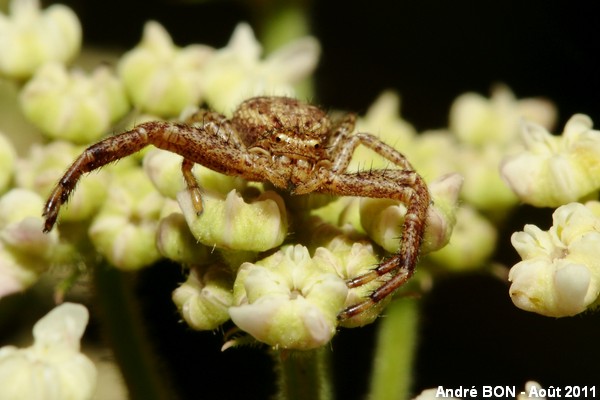
|
Xysticus sp. has straight raised hairs on the cephalothorax. They are shorter and curved like golf clubs on Ozyptila sp. |
| [To know more about the Xysticus sp.] [Next picture] [Previous picture] [Top] |
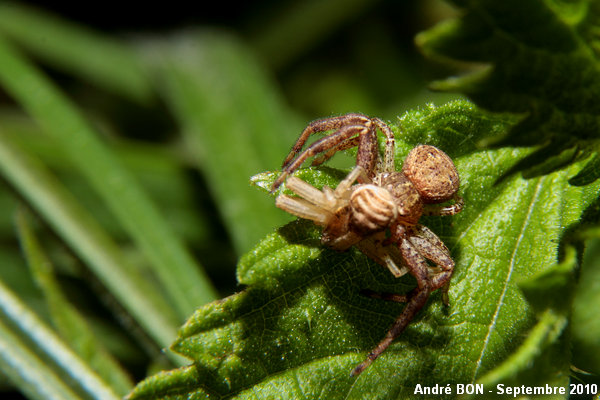
|
What does this spider carry? Isn't it some remaining part of a moult? |
| [To know more about the Xysticus sp.] [Previous picture] [Top] |
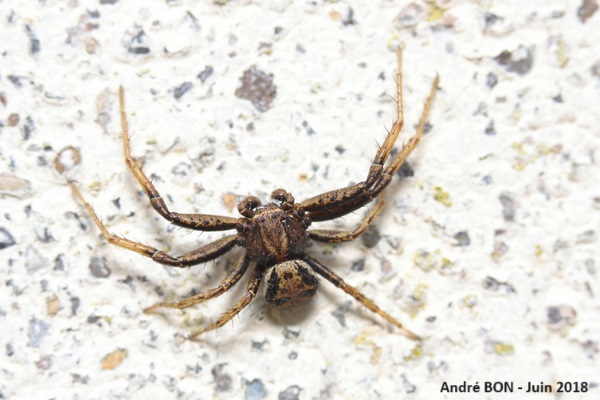
|
Here is a male, and in this difficult genus I found no clue to point towards a species. The small apophysis that we see on the right pedipalp perhaps… |